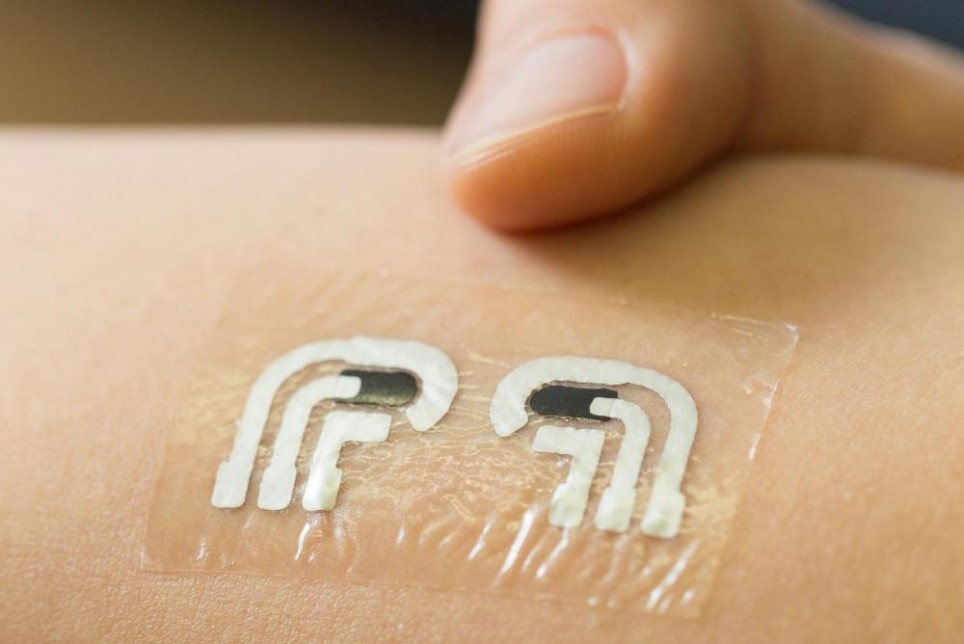Ever wonder why the doctor always takes your temperature and blood pressure, whether you are there for a cold or a physical or a hang nail? It’s a single point of data that may or may not string into a viable information picture. Sure … a fever shows the possibility of infection, but it’s unlikely to let you know if heart disease or cancer are beginning their work.
A bio-sensor is a wearable or an implanted device that can capture and transmit data about biological processes: from heart rate and blood oxygen levels to glucose sensors and pathogen detection.
Bio-sensing Wearables Start Simply with Fitness
Mainstream fitness wearables like FitBit and the upcoming iWatch (Apple Watch) demonstrate some of these capabilities already in place. The device is “always on” recording data points about activity (heartrate, distance traveled, stairs) and rest (resting heartrate, sleep) or at least, when you wear it.
It’s not just on your wrist either. (The sensors are the earrings.)
[youtube=http://youtu.be/AxGftvBk9dg]
The cloud captures the data and for fitness application, this provides a more vivid picture of what workouts have what burn rates. Fitbit touts monitoring diet and calorie intake. Potentially, they dovetail into a more comprehensive health picture.
Before the Walk-In Office Visit
Biosensor wearables can provide streams of vital signs to the doctor before the patient walks in the door.

Biosensors provide health monitoring for those with conditions such as diabetes and heart conditions. Biosensors such as InfraV provides constant monitoring of blood sugar, PULSOX and blood pressure. The individual has immediate feedback on their status and the information can alert their doctor when a critical (or potentially critical) situation emerges.
Tattoo on my Soul
Adhesive wearables hold lots of promise for fitness and health monitoring in the future.
Researchers at the University of California, San Diego have tested a proof-of-concept tattoo that extracts and measures glucose.
Better Health Visibility is Coming
The future of wearables is adding more data with less participation. Wearables will continue to record more “vital” signs, as well as perhaps more “subtle” signs about what your health is doing. The method of collecting that data will be progressively passive, requiring less and less input and maintenance from the wearer.
Doctors will have a more robust collective picture of patients health metrics and not just discrete data points from office visits, where patients are likely to be stressed, either masking or inflating the readings.
Big Data incorporates this massive health information into your personal data lake, which you may or may not share with whomever you want – your health app, your doctor, your friends, your health social network, the American Heart Association. (But that’s another topic.)
Your personal data lake helps assess your health status. What’s your doctor’s opinion? Why not ask 10? or 100? Or ask a non-doctor for homeopathic guidance. It’s your data and your health.
An Ounce of Prevention
The potential of wearables with Big Data implementation is further underlined with prevention methods already in business models.
PWC Digital Services has a suite of tools for business applications in several industries – even poopy diapers.
health care workers will soon have much more accurate information about a patient’s condition. Sensors will allow more accurate monitoring of chronic conditions, but they may also play a role in initial diagnosis. For example, a diaper with an implanted bio-sensor could detect a baby’s health issues and provide a quick warning to parents. – PWC
For a doctor concerned about post surgery infection.
The iWatch reads a pattern of heart rate, skin moisture and daily fluctuation of temperature consistent with infection. It sends the info back as a red flag and alerts me. Based on the patient’s GPS it also alerts me of an unusually high number of Staphylococcus infections in the persons area. You can be sure I’ll call her and ask a lot of questions and, based on her answers, may even prescribe her antibiotics. We interrupt the problem before she even realized there was one, before it gets worse. – http://www.cosmeticsurg.net



